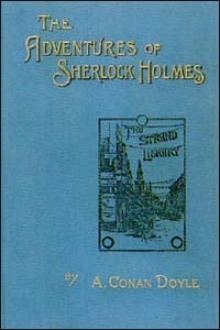My Autobiography Charles Chaplin (best books to read ever TXT) 📖

- Author: Charles Chaplin
Book online «My Autobiography Charles Chaplin (best books to read ever TXT) 📖». Author Charles Chaplin
The same thing happened at the Green Room Club, Mr Saintsbury calling out other members to have a look at me. Then and there he handed me the part of Sammy, saying that it was one of the important characters in his play. I was a little nervous for fear he might ask me to read it on the spot, which would have been embarrassing as I was almost unable to read; fortunately he told me to take it home and read it at leisure, as they would not be starting rehearsals for another week.
I went home on the bus dazed with happiness and began to get the full realization of what had happened to me. I had suddenly left behind a life of poverty and was entering a long-desired dream – a dream my mother had often spoken about, had revelled in. I was to become an actor! It had all come so suddenly, so unexpectedly. I kept thumbing the pages of my part – it had a new brown paper cover – the most important document I have ever held in my life. During the ride on the bus I realized I had crossed an important threshold. No longer was I a nondescript of the slums; now I was a personage of the theatre, I wanted to weep.
Sydney’s eyes were filmy when I told him what had happened. He sat crouched on the bed, thoughtfully looking out of the window, shaking and nodding his head; then said gravely: ‘This is the turning point of our lives. If only Mother was here to enjoy it with us.’
‘Think of it,’ I continued, enthusiastically. ‘Forty weeks at two pounds ten. I told Mr Hamilton you attended to all business matters, so,’ I added eagerly, ‘we might even get more. Anyway, we can save sixty pounds this year!’
After our enthusiasm had simmered down we reasoned that two pounds ten was hardly enough for such a big part. Sydney went to see if he could raise the ante – ‘there’s no harm in trying,’ I said – but Mr Hamilton was adamant. ‘Two pounds ten is the maximum,’ he said – and we were happy to get it.
Sydney read the part to me and helped me to memorize the lines. It was a big part, about thirty-five sides, but I knew it all by heart in three days.
The rehearsals of Jim took place in the upstairs foyer of the Drury Lane Theatre. Sydney had so zealously coached me that I was almost word-perfect. Only one word bothered me. The line was: ‘Who do you think you are – Mr Pierpont Morgan?’ and I would say: ‘Putterpint Morgan’. Mr Saintsbury made me keep it in. Those first rehearsals were a revelation. They opened up a new world of technique. I had no idea that there was such a thing as stage-craft, timing, pausing, a cue to turn, to sit, but it came naturally to me. Only one fault Mr Saintsbury corrected: I moved my head and ‘mugged’ too much when I talked.
After rehearsing a few scenes he was astonished and wanted to know if I had acted before. What a glow of satisfaction, pleasing Mr Saintsbury and the rest of the cast! However, I accepted their enthusiasm as though it were my natural birthright.
Jim was to be a try-out for one week at the Kingston Theatre and for another week at the Fulham. It was a melodrama patterned on Henry Arthur Jones’s Silver King: the story of an aristocrat suffering from amnesia, who finds himself living in a garret with a young flower-girl and a newspaper boy, Sammy – my part. Morally, it was all on the up and up: the girl slept in the cupboard of the garret, while the Duke, as we called him, enjoyed the couch, and I slept on the floor.
The first act was at No. 7A Devereux Court, the Temple, the chambers of James Seaton Gatlock, a wealthy lawyer. The tattered Duke, having called on his rival of a past love affair, begs for alms to help his sick benefactor, the flower-girl who had supported him during his amnesia.
In an altercation, the villain says to the Duke: ‘Get out! Go and starve, you and your coster mistress!’
The Duke, though frail and weak, picks up a paper-knife from the desk as if to strike the villain, but it drops from his hands on to the desk as he is stricken with epilepsy, falling unconscious at the villain’s feet. At this juncture, the villain’s ex-wife, with whom the tattered Duke was once in love, enters the room. She also pleads for the tattered Duke, saying: ‘He failed with me; he failed at the Bar! At least you can help him!’
But the villain refuses. The scene rises to a climax, in which he accuses his ex-wife of infidelity with the derelict and denounces her also. In a frenzy she picks up the paper-knife that fell from the derelict’s hand and stabs the villain, who falls dead in his armchair, while the derelict still lies unconscious at his feet. The woman disappears from the scene, and the Duke, regaining consciousness, discovers his rival dead. ‘God, what have I done?’ says he.
Then business follows. He searches the dead man’s pockets, finds a wallet in which he fingers several pounds, a diamond ring and jewellery, all of which he takes, and as he leaves by the window he turns, saying: ‘Goodbye, Gatlock; you did help me, after all.’ Curtain.
The next act was the garret in which the Duke lived. The scene opened with a lone detective looking into a cupboard. I enter whistling, then stop, seeing the detective.
NEWSBOY: Oi, you. Do you know that’s a lady’s bedroom?
DETECTIVE: What! That cupboard? Come here!
BOY: The cool cheek of him!
DETECTIVE: you stow that. come in and shut the





Comments (0)